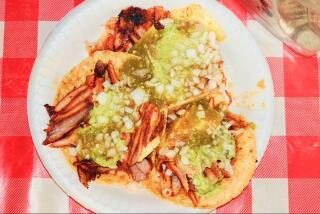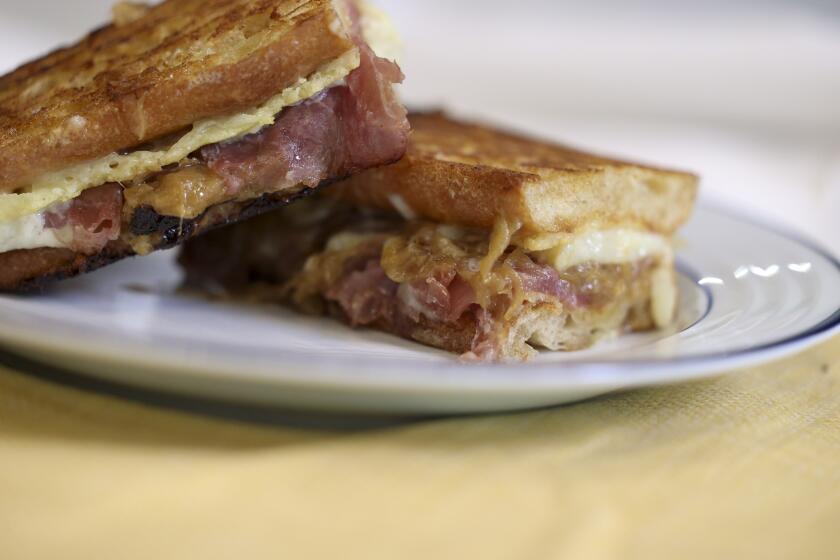Peanut bans might not be best course
Sugary soft drinks and high-fat foods have their detractors, but it’s the humble peanut that strikes fear in the heart of school officials -- so much fear, in fact, that some have taken their anti-peanut efforts to an extreme.
A growing number of schools across the nation have banned peanuts and any products containing traces of them because of their ability to trigger severe allergic reactions in some children.
In highly allergic children, even a minute amount of peanut can trigger a response. Although most allergic children will have a reaction only if they eat peanuts or products containing them, some will also react to skin contact with these foods. (A small number of children are so sensitive that simply being around these foods can be dangerous.)
“Peanuts and tree nuts account for the majority of fatal and near fatal allergic reactions,” says Gary Rachelefsky, clinical professor of pediatrics at UCLA, although milk and egg allergies are actually more common.
The number of American children affected by these types of peanut allergies appears to be increasing; a study reported last year found that the prevalence of peanut allergy doubled from 1997 to 2002.
The only certain way to prevent these allergic reactions is to avoid contact with peanuts completely. That is exactly what bans on peanuts in schools aim to do. But not all allergy experts are sure that the bans are effective.
“There have been two studies that have reported that there have been reactions in schools in spite of bans,” says Anne Munoz-Furlong, founder of the advocacy group Food Allergy & Anaphylaxis Network.
Some experts say school bans may do more harm than good, increasing the risk that allergic children will come into contact with peanuts by creating a false sense of security on campus.
Realistically, it’s almost impossible to guarantee a nut-free campus. Baked goods such as cookies containing peanuts may be inadvertently packed in children’s lunches, and foods brought to school may be unknowingly contaminated with peanuts because of the way they were prepared or stored.
If allergic children trade or share foods with others -- thinking all foods are safe -- dangerous reactions can occur. Teachers or other school personnel may dismiss allergic symptoms because they think the campus is peanut-free. “I don’t think a ban is a panacea,” says Scott Sicherer, an associate professor at the Jaffe Food Allergy Institute at Mount Sinai Hospital in New York. “You have to apply a certain amount of reason.”
He says that what works in one school setting may not be right in another. A peanut ban could benefit very young children in day-care or preschool, for example, who can’t be relied on not to share food; for older children, other methods of avoidance might be sufficient.
To reduce the likelihood of an accidental exposure, the American Academy of Allergy, Asthma and Immunology recommends that children should not be permitted to trade or share food, utensils or containers. They also encourage hand washing -- by everyone -- before and after eating. (A study earlier this year found that the peanut allergen can be easily cleaned from hands with soap and water.)
“A compromise is to have a peanut-free area,” Rachelefsky says. Some schools create a safe eating zone for allergic children where peanuts aren’t permitted; alternatively, an area for children with food containing peanuts can be created.
The most important steps schools can take are to educate their staffs about food allergies and put emergency plans in place, allergy experts say. All faculty and cafeteria staff should be formally trained to recognize symptoms of food allergies and be capable of reacting quickly if a reaction occurs.
Studies demonstrate that many schools are not properly prepared. Researchers studied a group of 100 children who had experienced an allergic reaction to peanut or tree nut (such as walnut or pecan) in school or day-care. In about one-third of the reactions, symptoms went unnoticed by school personnel and were recognized only at the end of the school day when the child was picked up by a parent.
Even when school employees did detect allergic reactions, they frequently didn’t respond properly.
“If a child is peanut allergic and there’s even a suggestion that they are having an allergic reaction, they should be given epinephrine,” Rachelefsky says. (Epinephrine helps abort the reaction, and its prompt administration dramatically reduces the risk of death.) Epinephrine was administered in less than one-third of all the reactions studied.
Although peanut bans have not been proven to prevent allergic reactions, the pressure on schools to adopt them is strong, and the number of peanut-free campuses may well grow.
*
Dr. Valerie Ulene is a board-certified specialist in preventive medicine practicing in Los Angeles. She can be reached at themd@att.net.
More to Read
Eat your way across L.A.
Get our weekly Tasting Notes newsletter for reviews, news and more.
You may occasionally receive promotional content from the Los Angeles Times.










